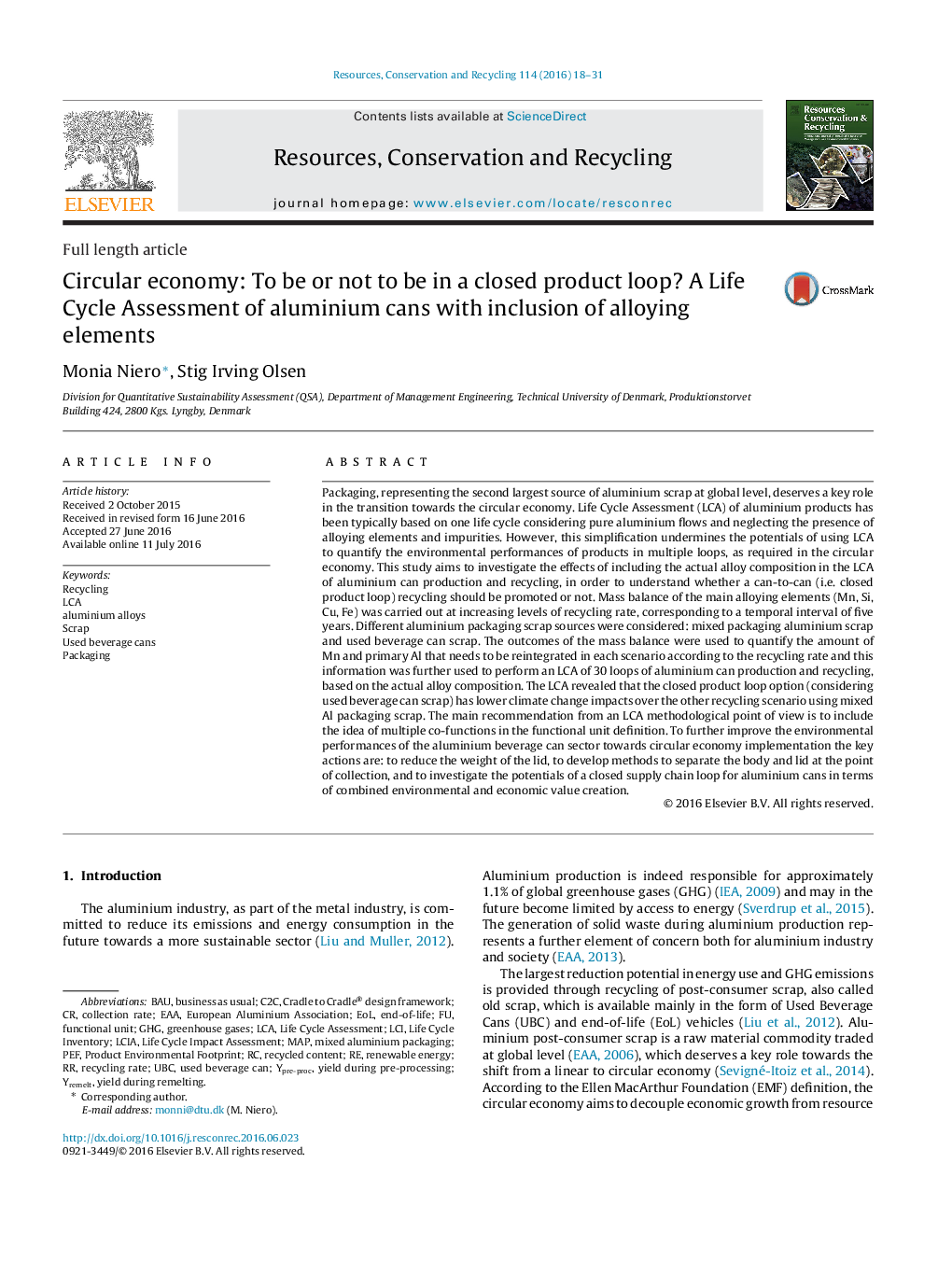| کد مقاله | کد نشریه | سال انتشار | مقاله انگلیسی | نسخه تمام متن |
|---|---|---|---|---|
| 1062659 | 1485677 | 2016 | 14 صفحه PDF | دانلود رایگان |
• Mass balance of main Al alloying elements (Mn, Fe, Si, Cu) is performed.
• Life Cycle Assessment of aluminium can based on actual alloy composition.
• A “Circular economy-inspired” functional unit is defined.
• Mn is the limiting alloying element for can-to-can aluminium recycling.
• Closed product loop recycling has the lowest climate change impacts.
Packaging, representing the second largest source of aluminium scrap at global level, deserves a key role in the transition towards the circular economy. Life Cycle Assessment (LCA) of aluminium products has been typically based on one life cycle considering pure aluminium flows and neglecting the presence of alloying elements and impurities. However, this simplification undermines the potentials of using LCA to quantify the environmental performances of products in multiple loops, as required in the circular economy. This study aims to investigate the effects of including the actual alloy composition in the LCA of aluminium can production and recycling, in order to understand whether a can-to-can (i.e. closed product loop) recycling should be promoted or not. Mass balance of the main alloying elements (Mn, Si, Cu, Fe) was carried out at increasing levels of recycling rate, corresponding to a temporal interval of five years. Different aluminium packaging scrap sources were considered: mixed packaging aluminium scrap and used beverage can scrap. The outcomes of the mass balance were used to quantify the amount of Mn and primary Al that needs to be reintegrated in each scenario according to the recycling rate and this information was further used to perform an LCA of 30 loops of aluminium can production and recycling, based on the actual alloy composition. The LCA revealed that the closed product loop option (considering used beverage can scrap) has lower climate change impacts over the other recycling scenario using mixed Al packaging scrap. The main recommendation from an LCA methodological point of view is to include the idea of multiple co-functions in the functional unit definition. To further improve the environmental performances of the aluminium beverage can sector towards circular economy implementation the key actions are: to reduce the weight of the lid, to develop methods to separate the body and lid at the point of collection, and to investigate the potentials of a closed supply chain loop for aluminium cans in terms of combined environmental and economic value creation.
Figure optionsDownload as PowerPoint slide
Journal: Resources, Conservation and Recycling - Volume 114, November 2016, Pages 18–31
